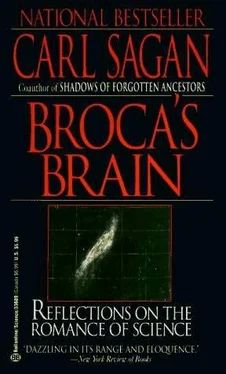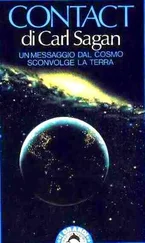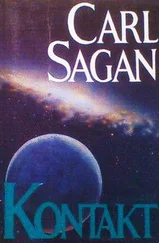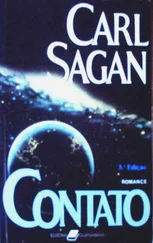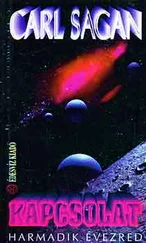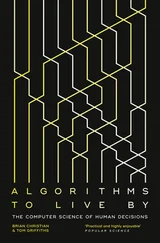Carl Sagan - Broca's Brain - The Romance of Science
Здесь есть возможность читать онлайн «Carl Sagan - Broca's Brain - The Romance of Science» весь текст электронной книги совершенно бесплатно (целиком полную версию без сокращений). В некоторых случаях можно слушать аудио, скачать через торрент в формате fb2 и присутствует краткое содержание. Жанр: Физика, на английском языке. Описание произведения, (предисловие) а так же отзывы посетителей доступны на портале библиотеки ЛибКат.
- Название:Broca's Brain: The Romance of Science
- Автор:
- Жанр:
- Год:неизвестен
- ISBN:нет данных
- Рейтинг книги:3 / 5. Голосов: 1
-
Избранное:Добавить в избранное
- Отзывы:
-
Ваша оценка:
- 60
- 1
- 2
- 3
- 4
- 5
Broca's Brain: The Romance of Science: краткое содержание, описание и аннотация
Предлагаем к чтению аннотацию, описание, краткое содержание или предисловие (зависит от того, что написал сам автор книги «Broca's Brain: The Romance of Science»). Если вы не нашли необходимую информацию о книге — напишите в комментариях, мы постараемся отыскать её.
Broca's Brain: The Romance of Science — читать онлайн бесплатно полную книгу (весь текст) целиком
Ниже представлен текст книги, разбитый по страницам. Система сохранения места последней прочитанной страницы, позволяет с удобством читать онлайн бесплатно книгу «Broca's Brain: The Romance of Science», без необходимости каждый раз заново искать на чём Вы остановились. Поставьте закладку, и сможете в любой момент перейти на страницу, на которой закончили чтение.
Интервал:
Закладка:
THE LEAD TIMES for planetary missions are very long. The design, fabrication, testing, integration and launch of a typical planetary mission takes many years. A systematic program of planetary exploration requires a continuing commitment. The most celebrated American achievements on the Moon and planets-Apollo, Pioneer, Mariner and Viking-were initiated in the 1960s. At least until recently, the United States has made only one major commitment to planetary exploration in the whole of the decade of the 1970s-the Voyager missions, launched in the summer of 1977, to make the first systematic fly-by examination of Jupiter, Saturn, their twenty-five or so moons and the spectacular rings of the latter.
This absence of new starts has produced a real crisis in the community of American scientists and engineers responsible for the succession of engineering successes and high scientific discovery that began in 1962 with the Mariner 2 fly-by of Venus. There has been an interruption in the pace of exploration. Workers have been laid off and drifted to quite different jobs, and there is a real problem in providing continuity to the next generation of planetary exploration. For example, the earliest likely response to the spectacularly successful and historic Viking exploration of Mars will be a mission that does not even arrive at the Red Planet before 1985-a gap in Martian exploration of almost a decade. And there is not the slightest guarantee that there will be a mission even then. This trend-a little like dismissing most of the shipwrights, sail weavers and navigators of Spain in the early sixteenth century-shows some slight signs of reversal. Recently approved was Project Galileo, a middle-1980s mission to perform the first orbital reconnaissance of Jupiter and to drop the first probe into its atmosphere-which may contain organic molecules synthesized in a manner analogous to the chemical events which on Earth led to the origin of life. But the following year Congress so reduced the funds available for Galileo that it is, at the present writing, teetering on the brink of disaster.
In recent years the entire NASA budget has been well below one percent of the federal budget. The funds spent on planetary exploration have been less than 15 percent of that. Requests by the planetary science community for new missions have been repeatedly rejected-as one senator explained to me, the public has not, despite Star Wars and Star Trek , written to Congress in support of planetary missions, and scientists do not constitute a powerful lobby. And yet, there are a set of missions on the horizon that combine extraordinary scientific opportunity with remarkable popular appeal:
Solar Sailing and Comet Rendezvous. In ordinary interplanetary missions, spacecraft are obliged to follow trajectories that require a minimum expenditure of energy. The rockets burn for short periods of time in the vicinity of Earth, and the spacecraft mainly coast for the rest of the journey. We have done as well as we have not because of enormous booster capability, but because of great skill with severely constrained systems. As a result, we must accept small payloads, long mission times and little choice of departure or arrival dates. But just as on Earth we are considering moving from fossil fuels to solar power, so it is in space. Sunlight exerts a small but palpable force called radiation pressure. A sail-like structure with a very large area for its mass can use radiation pressure for propulsion. By positioning the sail properly, we can be carried by sunlight both inwards toward and outwards away from the Sun. With a square sail about half a mile on each side, but thinner than the thinnest Mylar, interplanetary missions can be accomplished more efficiently than with conventional rocket propulsion. The sail would be launched into Earth orbit by the manned Shuttle craft, unfurled and strutted. It would be an extraordinary sight, easily visible to the naked eye as a bright point of light. With a pair of binoculars, detail on such a sail could be made out-perhaps even what on seventeenth-century sailing ships was called the “device,” some appropriate graphic symbol, perhaps a representation of the planet Earth. Attached to the sail would be a scientific spacecraft designed for a particular application.
One of the first and most exciting applications being discussed is a comet-rendezvous mission, perhaps a rendezvous with Halley’s comet in 1986. Comets spend most of their time in interstellar space and should provide major clues on the early history of the solar system and the nature of the matter between the stars. Solar sailing to Halley’s comet might not only provide close-up pictures of the interior of a comet-about which we now know close to nothing-but also, astonishingly, return a piece of a comet to the planet Earth. The practical advantages and the romance of solar sailing are both evident in this example, and it is clear that it represents not just a new mission but a new interplanetary technology. Because the development of solar-sailing technology is behind that of ion propulsion, it is the latter that may propel us on our first missions to the comets. Both propulsion mechanisms have their place in future interplanetary travel. But in the long term I believe solar sailing will make the greater impact. Perhaps by the early twenty-first century there will be interplanetary regattas competing for the fastest time from Earth to Mars.
Mars Rovers. Before the Viking mission, no terrestrial spacecraft had successfully landed on Mars. There had been several Soviet failures, including at least one which was quite mysterious and possibly attributable to the hazardous nature of the Martian landscape. Thus, both Viking 1 and Viking 2 were, after painstaking efforts, successfully landed in two of the dullest places we could find on the Martian surface. The lander stereo cameras showed distant valleys and other inaccessible vistas. The orbital cameras showed an extraordinarily varied and geologically exuberant landscape which we could not examine close up with the stationary Viking lander. Further Martian exploration, both geological and biological, cries out for roving vehicles capable of landing in the safe but dull places and wandering hundreds or thousands of kilometers to the exciting places. Such a rover would be able to wander to its own horizon every day and produce a continuous stream of photographs of new landscapes, new phenomena and very likely major surprises on Mars. Its importance would be improved still further if it operated in tandem with a Mars polar orbiter which would geochemically map the planet, or with an unmanned Martian aircraft which would photograph the surface from very low altitudes.
Titan Lander. Titan is the largest moon of Saturn and the largest satellite in the solar system (see Chapter 13). It is remarkable for having an atmosphere denser than that of Mars and is probably covered with a layer of brownish clouds composed of organic molecules. Unlike Jupiter and Saturn, it has a surface on which we can land, and its deep atmosphere is not so hot as to destroy the organic molecules. A Titan entry-probe and lander mission would probably be part of a Saturn orbital mission, which might also include a Saturn entry probe.
Venus Orbital Imaging Radar. The Soviet Venera 9 and 10 missions have returned the first close-up photographs of the surface of Venus. Because of the permanent cloud pall, the surface features of Venus are not visible through Earth-bound optical telescopes. However, Earth-based radar and the radar system aboard the small Pioneer Venus orbiter have now begun to map Venus surface features, and have revealed mountains and craters and volcanoes as well as stranger morphology. A proposed Venus orbital imaging radar would provide pole-to-pole radar pictures of Venus with much higher detail than can be achieved from the surface of the Earth, and would permit a preliminary reconnaissance of the Venus surface comparable to that achieved for Mars in 1971-72 by Mariner 9.
Читать дальшеИнтервал:
Закладка:
Похожие книги на «Broca's Brain: The Romance of Science»
Представляем Вашему вниманию похожие книги на «Broca's Brain: The Romance of Science» списком для выбора. Мы отобрали схожую по названию и смыслу литературу в надежде предоставить читателям больше вариантов отыскать новые, интересные, ещё непрочитанные произведения.
Обсуждение, отзывы о книге «Broca's Brain: The Romance of Science» и просто собственные мнения читателей. Оставьте ваши комментарии, напишите, что Вы думаете о произведении, его смысле или главных героях. Укажите что конкретно понравилось, а что нет, и почему Вы так считаете.
